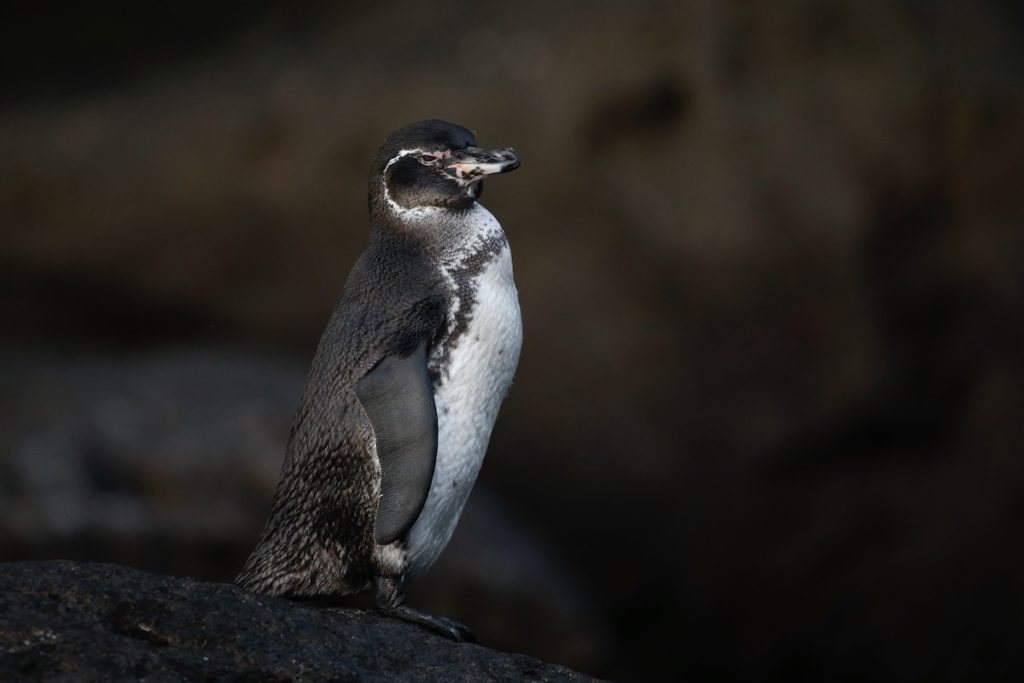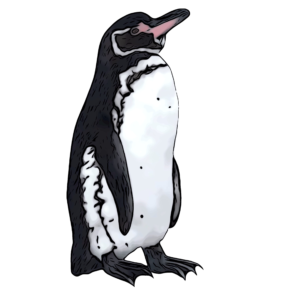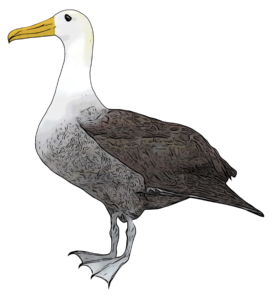
Identification
Unmistakeable. The only penguin in the Galapagos.
Description
A small penguin roughly 50cm tall with black upperparts, a black face and neck and a black cresent running across its white underparts from its chest down its flanks. It has a white throat patch and a white, cresent-shaped line running from behend its eye onto its throat. It has limited pink at the base of its bill and around its eyes. Males are generally larger than females, have more pink on their faces, clearer markings and whiter chin-spots. Juveniles are grey brown with greyish cheecks, no or very little pink coloration and no black cresent on their underparts.
Galapagos Distribution
Althogh there is a chance to see this species anywhere within the waters surounding the main archepelago, most Galapagos Penguins breed on Fernandina or the west coast of Isabella, with smaller breeding populations on Santiago, Bartolome, Sombrero Chino and Floreana.
Global Distribution
Found only in the Galapagos
Status in the Galapagos
An uncommon to locally common endemic resident.
Conservation
This species has undergone severe population fluctoations in recent decades due to frequent and severe El Nino effects. It is ranked as endangered due to its small population size (estimated at 1200 individuals in 2018) and vulnerability to a warming climate. Galapagos Penguins rely on cold surface water temperatures to initiate breeding. Severe El Nino effects over the last few cycles has consequently meant that many penguins did not breed. Those that do breed during warm conditions are met with unproductive oceans and a diminished food supply. As penguins have to travel further and longer to find enough food during warm ocean conditions, many young and adults have starved to death. The species is also made vulnerable by a lack of genetic diversity caused by regular population bottlenecks, meaning new or introduced diseases are a real threat. Some authorities estimate that the species has a 30% chance of going extinct in the next centuary even before accounting for the likelyhood of more frequent and severe El Nino effects.


